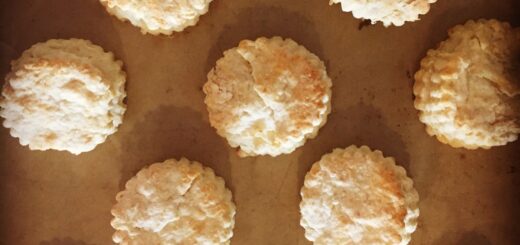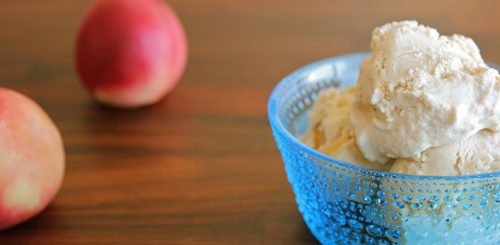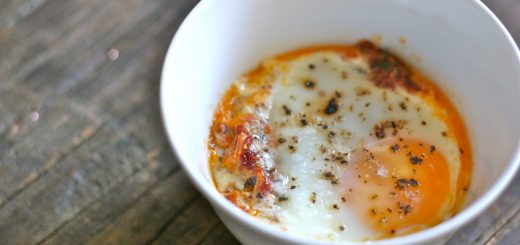{top tips} Chef-Tested Methods & Scientific Facts for Perfect Mashed Potatoes
To me, mashed potatoes are like a blank canvas. They can be creamy and pillowy or rich and silky. They can be chunky or smooth. They can have green stuff in them. But most importantly, they can be really really really good or just so blah and boring that they’re not worth the calories.

I always make mashed potatoes a little differently, so I’m not here to share a specific recipe – but rather a group of the most important scientific potato facts and chef tips gleaned from years of experimentation and experience. Armed with this knowledge, you will never need a recipe to make fabulous mashed potatoes under any circumstances.
Boiling the potatoes
My favorite food science nerd Harold McGee has some complicated reason why you should put potatoes in cold water and then bring them to a boil, instead of putting them directly into boiling water – it’s something about the heat forming a starch crust on the potatoes. Whatever the reason is, you should do what he’s says because he’s always right. Don’t serve people crusty potatoes. Start with cold water and bring them to a boil. After about 15 minutes, test with a sharp knife to see if it enters the potato very easily. If not, cook longer and keep testing.
Science says: add fat first, liquid second
Some recipes tell you to add butter and milk all at the same time, but that is also a big mistake. A while back I read an article from America’s Test Kitchen that really opened my eyes on this topic. They noted that the starchy structure of the potatoes absorb molecules in a specific way. If you add the milk first and then the butter, the potato molecules get filled up with milk molecules and the butter just floats around on the outside – giving you grainy mashed potatoes. However, if you add the butter first, the fat molecules get all up in the potatoes first, making them creamy and buttery. Then you add the milk to thin and smooth the mixture.
How do restaurants get them so rich and creamy?
You know those potatoe purees you get in a super fancy restaurant, that are so rich, velvety, and smooth they barely taste like potatoes at all? At the risk of being banned from the secret club of former chefs, I am going to reveal a somewhat shocking secret. Those may be in the ballpark of being literally half butter. Yes, I mean 2 parts potatoes to 1 part butter. They’re also usually put through a potato ricer. So if you’re interested in getting more of a potato puree texture, add copious amounts of butter (and some heavy cream and lots of salt while you’re at it) and keep the cardiologist on speed dial.
The tools
If you are anti-lump, your best bet is a potato ricer. You can use a standard masher but you will have to work very hard to get no lumps. If you want fewer lumps, use one that looks like a grid (like this) not one that looks like squiggly lines (this) – the squiggly one is almost impossible to use for super smooth mashed potatoes.
You can use a stand mixer or handheld mixer, but you should be careful because you can get glue-y mashed potatoes which are so bad, they are actually worse than no mashed potatoes at all. If you’re using a stand mixer, start with the flat blade, then switch to the whisk attachment to get out all the lumps. With a handheld mixer, I like to pre-smash the potatoes a bit before adding the power of the mixer, as a precaution against overmixing.
Avoid a food processor and an immersion blender at all costs, unless you were that weird kid who actually liked eating the library paste, or need something to affix wallpaper with – the speed of the blades will smash that starch into a sticky mess of glue before you can say “gravy.”
What potatoes to use?
There is a lot of discussion about this and I’d love to tell you that there is no right answer, but that would be a lie. The best potatoes to use are Yukon golds. The combination of starch and density makes the best mashed potatoes. If you can’t get them, use white potatoes. If you can’t get those, use russet potatoes, but if you have enough time, peel and cut them the night before and leave them in a bowl of water in the refrigerator overnight to remove some of the starch before cooking.
Preparing the potatoes
Cut the potatoes such that each piece is roughly the same size and thickness so they boil evenly. Otherwise, they will cook unevenly and you’ll get some hard ones and some soft ones.
If you’re lazy and don’t want to peel the potatoes, that’s OK, but make sure to wash and scrub them well with water before cooking and roughly chop them. If you leave skins on, you might want to rename the potatoes “smashed potatoes” or call them “rustic” or “country-style” or something to act like you did it on purpose and hide the fact that you were just being lazy.
Thomas Keller thinks that for a potato puree you should boil potatoes whole in their skins, then scoop out the flesh and throw away the skins. I have tried this and can discern no taste difference, but if you hate peeling but don’t want peels, this might be a good solution for you.
How to make them ahead
You can make good mashed potatoes a whole day in advance of serving them – and that will involve butter and cream cheese. Here is a recipe that utilizes this technique in case you’re an advance planner.
Mashed potato add-ins and substitutions
You probably know that the basic mashed potato components are butter, milk or cream, and salt and pepper. (Some people like to add a pinch of nutmeg, but I think those people are crazy.) Boil the potatoes per above instructions, drain well, and mash with cut cubes of butter (and/or some of the add-ins below – like sour cream, cream cheese, or what have you.) Add milk, half and half, or cream a bit at a time, plus salt and pepper, and keep mashing and adding until you get the desired smoothness.
There are lots of other ways to change it up, though – whether you’re vegan, lactose-intolerant, or just want some complimentary flavors going on.
In addition to/in place of the butter, try:
- cream cheese
- sour cream
- browned butter
- creme fraiche
- soft cheese like a mild brie
- olive oil
- soft goat cheese
- mascarpone
In addition to or in place of the milk/cream, try:
- chicken broth
- buttermilk
- almond milk
- soy milk
Things you can mix in:
- caramelized onions
- roasted garlic
- horseradish
- dijon or whole grain mustard
- wasabi paste
- grated parmesan or other hard cheese
- grated cheddar
- crispy bacon pieces
- roasted red peppers
- sundried tomatoes
- chopped fresh herbs
- chives
- parsley
- chopped sauteed kale or cabbage
- curry powder
- chili powder
- pesto
- orange zest or lemon zest (works well with parsley)
- truffle oil
- Creamy mashed potatoes from Savory Sweet Life
- Mashed potatoes with scallions & lemon zest from Ezra Pound Cake
- Mashed potatoes with brown butter, goat cheese, and sage from Simply Recipes
- Heavenly mashed potatoes from Spoon Fork Bacon
- Mascarpone mashed potatoes from Weelicious
- Green mashed potatoes from The Year in Food
- Smoky & cheesy buttermilk baked mashed potatoes from Picky Palate
- Fennel, Stilton, & walnut smashed potatoes from Oui, Chef
- Creamy dairy-free mashed potatoes from The Family Kitchen
- Sour cream horseradish mashed potatoes from the Tastespotting Blog
What’s your favorite way to make mashed potatoes? Did I miss any tips or add-in ideas? I would love to hear them!






Since I’m reeeeally lazy, can I boil the potatoes whole rather than spending all the time cutting them up?
Yes! Actually I noted that Thomas Keller suggests boiling potatoes whole in their skins, then scooping the flesh out of the skins and throwing the skins away. (Joel Robuchon does this too.) Make sure they have at least 1 inch water covering them and cook them for about 20-30 minutes. Drain immediately then when still hot but cool enough to handle, scoop out the flesh and get on with the mashing. 🙂
Mashed potatoes are one of my favorite things. The potato ricer makes all the difference, IMHO.
@Dana – the ricer is a great call if you have the patience and want no lumps! 🙂
What a great post! Thank you for the science in the kitchen part about adding the butter first. Makes all of the sense in the world! I agree that Yukon Gold are the best! We like lumpy potatoes so my husband uses a handheld potato masher. However, I was having him use a pastry cutter for 30 years because he didn’t know the difference and I didn’t have a masher!!! Five years later, he still won’t let me forget that one! 🙂
@mjskit – Thanks! You made me lauch. I’m not sure if I like lumpy mashed potatoes because I like them, or because I’m too lazy to make non-lumpy. I think I might just like them at this point! 🙂
this is what I use–http://www.google.com/imgres?q=potato+ricer&um=1&hl=en&biw=1280&bih=494&tbm=isch&tbnid=X2kvIWzJChkXmM:&imgrefurl=http://atomictoasters.com/category/the-style-of-technology/page/3/&docid=lKxTg3bGQg7y5M&imgurl=http://atomictoasters.com/wp-content/uploads/2010/10/ricer.jpg&w=400&h=300&ei=q4zJToz1K6bK2AXZ5LSUDQ&zoom=1&iact=rc&dur=147&sig=113172223219109306297&page=3&tbnh=123&tbnw=157&start=19&ndsp=14&ved=1t:429,r:8,s:19&tx=109&ty=15
sorry for the crazy link but mine looks exactly like this, got it at antique store. Lumps don’t stand a chance 🙂 And thanks for the butter first tip! I had no idea!
@Ginny perfect! It’s amazing how sometimes the antique kitchen tools work better than the new ones. I searched high and low for an egg beater like this – http://1.bp.blogspot.com/_ECAMAhIIm4Y/S0Z50IGI3PI/AAAAAAAABVo/jISLnMJJfo4/s400/egg+beater.jpg – couldn’t find anything that would do right by the pancake batter without it. 🙂 Happy thanksgiving!!
Thank-you for all the info ! I like the science behind the food! I thought my mashed potatoes were glue like from adding the milk before butter, I didnt know over mixing caused the horrible potato glue !
@Natalie Ann I am glad to help!
Why throw the best part away? Cooked potatoes skins and butter or sour cream is like the icing on the cake.
I add some thinly chopped garlicbefore the butter.